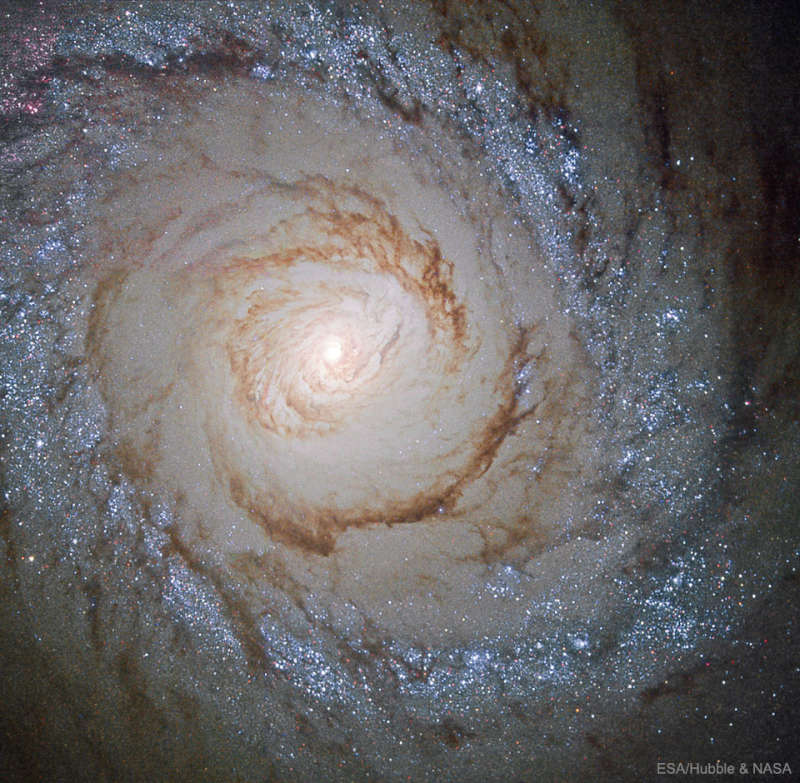
|
Credit & Copyright: ESA/Hubble &
NASA
Explanation:
Why does this galaxy have a ring of bright blue stars?
Beautiful island universe
Messier 94 lies a mere 15 million light-years
distant in the northern constellation of the Hunting Dogs
(Canes
Venatici).
A popular target for
Earth-based astronomers,
the face-on spiral galaxy is about 30,000
light-years across,
with spiral arms sweeping through the
outskirts of its broad disk.
But this Hubble Space Telescope field of view spans about
7,000 light-years across
M94's central region.
The featured close-up highlights the galaxy's compact,
bright nucleus, prominent inner
dust lanes, and the
remarkable
bluish ring of young massive stars.
The ring stars are all likely less than 10 million
years old, indicating that M94 is a
starburst
galaxy that is experiencing an epoch of rapid star formation
from inspiraling gas.
The circular ripple of blue stars is likely a
wave propagating outward, having been
triggered by the gravity and rotation of a
oval matter distributions.
Because M94 is relatively nearby,
astronomers can better explore
details of its starburst ring.
|
January February March April May June July August September October November December |
| ||||||||||||||||||||||||||||||||||||||||||||||||
NASA Web Site Statements, Warnings, and Disclaimers
NASA Official: Jay Norris. Specific rights apply.
A service of: LHEA at NASA / GSFC
& Michigan Tech. U.
Based on Astronomy Picture
Of the Day
Publications with keywords: M 94 - starburst galaxy
Publications with words: M 94 - starburst galaxy
See also:
